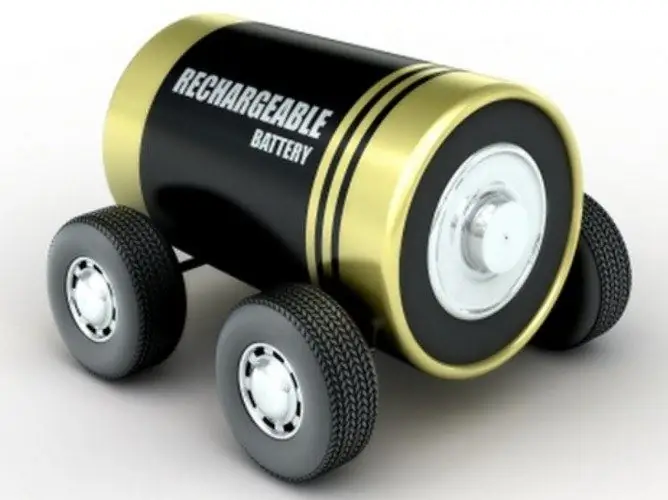Compact electric batteries are widely used in everyday life. They are used as a battery for a wide variety of devices, from toys to complex electrical devices. But not everyone knows how an ordinary battery works and what is the principle of its operation.

Instructions
Step 1
A conventional battery is a chemical source of electrical energy. In other words, an electric current is generated in it when certain chemical processes occur. Typically, a battery contains two metals and an electrolyte.
Step 2
The first battery appeared about four thousand years ago and looked like a large clay vase with a copper cylinder inside. The neck of the container was filled with bitumen, through which a metal rod passed. The vessel was filled with acetic acid and gave a voltage of about 1V.
Step 3
Current batteries have a slightly different device. Each battery has a cathode (positive electrode) and an anode (negative electrode). Both electrodes are immersed in liquid or dry electrolyte. Most often in everyday life you have to deal with manganese-zinc batteries, where ammonium chloride is used as an electrolyte. To avoid leakage, the electrolyte is thickened with polymer compounds.
Step 4
During operation, the anode material reacts with alkali, as a result of which the zinc body begins to dissolve. When zinc is oxidized, zincate is formed, which saturates the electrolyte. A region appears near the zinc anode containing an excess of negatively charged electrons.
Step 5
At the next stage, equilibrium occurs, at which the alkali is no longer consumed, which allows the battery to be used for a relatively long time. So that zinc corrosion does not pass too quickly, a reaction moderator - an inhibitor - is added to the anode.
Step 6
To remove excess charge from the anode, a brass element is used, which is brought out to the bottom of the battery. The function of the positive electrode is taken over by manganese dioxide, which is mixed with a thickener and carbon powder to increase electrical conductivity. This multicomponent composition is attached to the inner surface of the steel battery case. The design and principle of operation of the battery ensure its uninterrupted operation for a long time.







